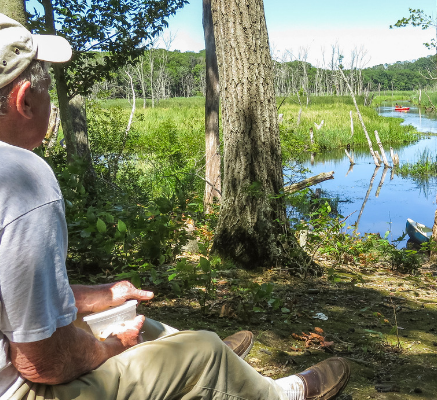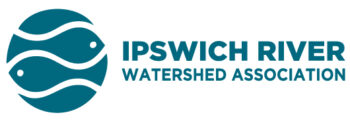HABITAT PROTECTION
The Ipswich River watershed is home to a wide range of wildlife including people, like you!
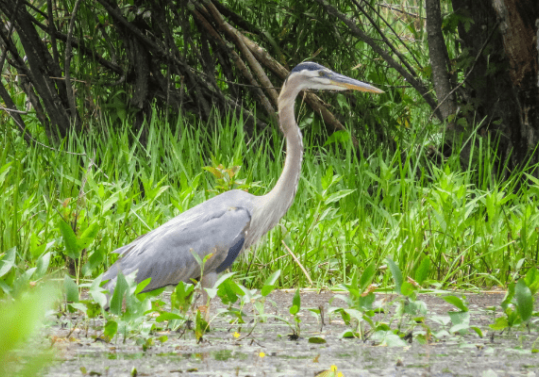
The Ipswich River watershed is home to a wide range of wildlife including
- River otter, beaver and muskrats
- Great blue heron, kingfishers, snowy egrets, sandpipers, osprey, and snowy owls
- Painted turtles, water snakes, blue salamanders, wood frogs, and painted turtles
- Damselflies, hummingbird moths, dragonflies and monarch butterflies.
AND people! We’re all about protecting both the natural spaces and human communities in the Ipswich River watershed so that there is enough clean, reliable water for people and wildlife. In order to keep the watershed a great place to live (for everyone) our work addresses:
RIVER CONNECTIVITY
Structures like outdated culverts, bridges and dams can create barriers to flow, which interrupt the course of rivers and tributaries.
Barriers to flow impact both natural river functions and impede the passage of wildlife, especially migratory species like herring and eel. Barriers to flow can result in:
- Increased risk of flooding
- Erosion
- Damage to infrastructure
- Road kill
- Lowered numbers of aquatic species
Roughly 70 dams and 500 crossings (culverts and bridges) now segment the Ipswich River system. Most of the dams and a large number of the crossings block important migration routes and impair habitat conditions.River connectivity can be improved by upgrading and repairing bridges and culverts and removing outdated dams. Dams that cannot be removed can have wildlife access improved by the installation of fish ladders, but many species do not use them. Dams can create barriers to flow, which interrupt the course of rivers and tributaries.
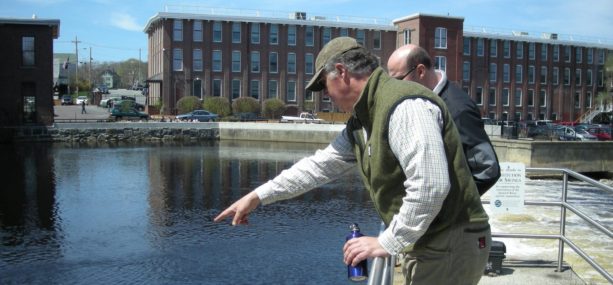
Each spring, volunteers count fish migratory fish at the Ipswich Mills Dam fish ladder.
Barriers to flow are among the major reasons why fish runs have dwindled in the Ipswich River and elsewhere. River herring used to number in the millions and spawn as far upstream as Wilmington and North Reading. Now their numbers have dropped to a few hundred annually and they are seldom seen beyond Ipswich’s Willowdale Dam, just a few miles from the ocean. American shad cannot travel even that short distance as they are stopped by the Ipswich Mills Dam, unable to navigate the fish ladder.
See the most recent updates on our barriers work here.
CLIMATE RESILIENCY
Helping communities plan for the future is an important component of our Ipswich River Municipal Services Program. Begun in 2014, the program aims to support towns in their efforts to comply with water-related regulations and to plan and implement projects that address both municipal and regional priorities, including those identified by the Parker-Ipswich-Essex Rivers Partnership (PIE-Rivers).
One aspect of this resiliency planning is the Massachusetts Municipal Vulnerability Preparedness (MVP) Program by holding Community Resilience Building Workshops. These workshops gather a mix of stakeholders together to identify areas that are vulnerable to weather-related threats and to make plans to improve the town’s resilience. The MVP program asks towns to look at a variety of hazards, including drought, flooding, heat, winter storms, public health impacts, and more.
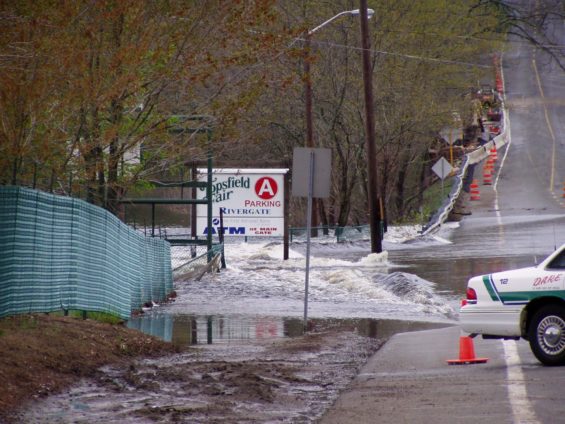
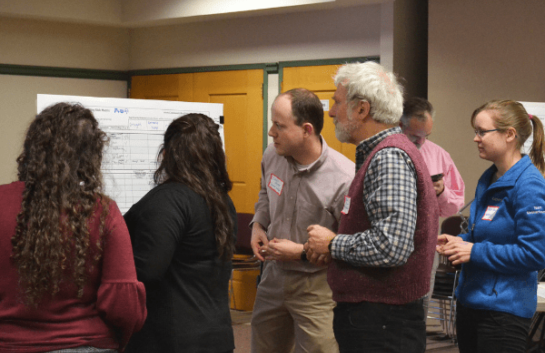
This “all hands” approach is useful in order to see the breadth of how climate change is going to impact so many different aspects of communities. Ultimately, the plans that result from these workshops provide a road map of actions and projects that towns can implement. Towns that complete the MVP workshops are then eligible for further state funding which will help make the community, including its infrastructure, people and natural systems, better prepared for storms, droughts and extreme temperatures.
To see how your town may be affected by weather-related impacts in the future, go to the newly published Massachusetts Climate Change Clearinghouse at: http://www.resilientma.org
Learn more about our Community Services Programs here.
LAND USE
Protecting open spaces like forests, meadows, and wetlands is one of the best things we can do to reduce flooding, recharge groundwater and keep our water cleaner.
We work with partners and towns to protect conservation land in the Ipswich River watershed. Especially important to the river are buffer areas like marshes and floodplain forests. These areas cannot be built within as they are necessary to:
- Allow waterways room to grow during high flow periods
- Filter run-off before it can flow directly into waterways
- Slow the flow of water and stabilize banks, helping to decrease erosion
- Provide important habitat for wildlife
Along with protecting open spaces, we advise businesses, towns and residents on best practices for managing their own property in ways that will save water and reduce pollution. Those interested in creating a beautiful outdoor space that protects wildlife habitat, conserves water and reduces pollution should check out our Greenscapes Program.
